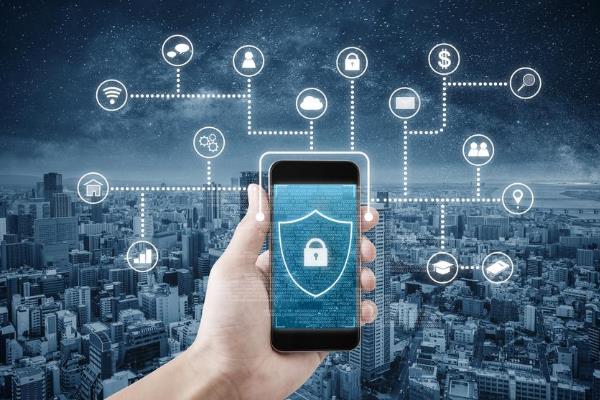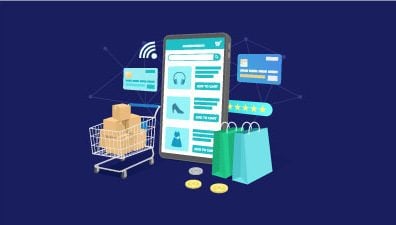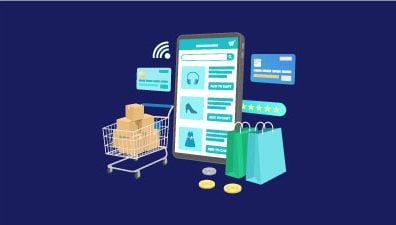Since there was a cyber world to exploit cybercrime, criminals robbed information, money and identities, shut down businesses and jeopardized security around the world. As more and more of us use our mobile phones to browse the web, banking and shopping, the risk of mobile commerce threats is growing, which is becoming increasingly promising for criminally responsible persons.
Luckily, mobile cybercrimes are still relatively rare, but major safety concerns, viruses and other mobile crimes have become major problems in recent years, and time is short before mobile devices see a cybercrime scourge. In fact, 92% of ISOs believe that mobile payments will increase cybercrime significantly over the next few years. Some mobile commerce crime new security threats are to be seen for the time being and in the years to come when criminals take advantage of mobile browsing and shopping safety defects and popularity.

Table of Contents
Top 10 mobile commerce crime security threats you need to know
Rootkit installation
A rootkit is a particularly stealthy software which installs on a device of a user and hides itself from standard detection modes, which allow it to operate in secret to access the computer and the information of its user privileges. In the past, these malicious programmes, as research in Rutgers showed, were limited to laptops and computers, but also to mobile handsets.
A rootkit can affect each portion of the phone from the touchscreen to the passwords when installed on a telephone. Not only can such programs steal information, they could even redirect calls to criminal activities from legitimate companies. This is not an easy risk of mobile commerce crime and many advise mobile users to be careful about what they see and use anti-virus and anti-malware with certain operating systems.
Risky QR codes
QR codes can be a cool way to find out more about products and to find an abundance of information, but not always safe. Mobile telephone users do not know very well where they are being scanned and QR codes are leading users to sites which have viruses or malware downloaded to their mobile device in more and more cases. Mobile commerce security professionals are already seeing a rash of issues with QR codes, and expect a significant increase in the number during the coming year.
Theft of digital certificates
If theft can bypass safety by mobile telephone, digital certificates can be stolen. What do digital certificates look like? They verify that the information a user sends is who it claims to be. As you could guess, someone else could pretend that you’re a pretty serious safety risk.
Although this risk already exists when you use a PC, it becomes a concern for mobile users too and AVG Technology has identified it as one of the most pressing mobile security problems.
Smishing
Like their cousin phishing, smishing is one of mobile commerce threats that tries to lead people to disclose private and personal data. Smishers send an SMS message (text) to their victims to inform them about personal details such as bank account, credit card or social security number. Smishers often appear to be companies who simply help to maintain their accounts in good standing and avoid buggy accusations that smishers say if they are not complying with them, or even sometimes try to earn a (false) award. Sometimes smishers want to collect personal data directly and others try to install malware to allow a phone to be remotely controlled.
Social engineering
Sadly, around this type of mobile commerce threats is built such a big company that it is even associated with common job titles. Social engineers scrutinize mobile users either by trying to provide them with personal information or by tricking individual companies. Criminals sometimes hack into bank accounts and change customer contact details. When fraud occurs, the bank contacts the criminal who verifies charges rather than the customer.
Social engineering takes place in so many ways that it is difficult to fight. Consumers will only have to watch out for any unusual activities to prevent them from becoming victims.
Unsecured wifi
If you sit at home using your Wi-Fi to browse the web, do you think you are safe from Internet criminals? Perhaps you aren’t. Wi-Fi offers easy access to information for many mobile commerce threats unless you are careful. While a secure home Wi-Fi network provides some protection, many mobile users can also make use of public Wi-Fi networks which allow criminals to steal or hide their interaction with banks and businesses. Some tests have demonstrated that most Wi-Fi networks can be hacked in five or less minutes, so that mobile users can do their cell phones with any private business and not Wi-Fi.
Encryption hacking
You and the companies that you frequently find encryption data safe for everyone. But encryption may not be a roadblock for sophisticated cyber criminals to steal your personal data, money, or identity. Criminals have become increasingly easy to crack the most common types of encryption. Many governments block the use of high-level coding systems (to break codes for law enforcement purposes when necessary) both consumers and businesses are stuck in a specific, sticky situation. Do you bet your best? Watch for any indications of fraud and use the highest possible encryption for all sensitive information.
Electronic eavesdropping
Notwithstanding whether you call a company to order goods or take a picture of your home, somebody can listen. Unfortunately, a number of different methods make electronic eavesdropping possible. It can happen through unsecured Wi-Fi networks or malicious apps; however, regardless of how it happens, this is one of the very serious mobile commerce crime security threats, which can lead to the compromise of large amounts of critical personal information.
Crimeware
App stores provide mobile commerce threats with a wealth of possibilities to fill their mobile devices with criminals. Nobody wants to download a program on their smartphone to make them the victim of fraud, but criminals disguise that they are entirely a different kind of program, perhaps a game or a useful tool. Actually, the app can be used in this way. The problem, however, is that the malware or tracking device includes tagalong which allows criminals to access information, to manage the telephone and a number of other malicious activities.
Virus and malware
A whopping 70 percent of mobile phone users felt that their smartphones were safe from these kinds of attacks. That false sense of security may be leading many mobile users to become unwitting victims of mobile commerce threats. While viruses and malware attacking mobile phones are still uncommon compared to PC-based ones, a new and ever bigger target for criminals has become the increasing number of smartphone and tablet devices.
Experts not only advise mobile clients, they also advise companies to prepare themselves to grow in these attacks, creating safer apps or payment systems, and offering better assistance to consumers.
How organizations and individuals can protect themselves from mobile commerce threats
While IT and security teams largely protect companies, employees and customer data, end users can also do a great deal to secure their devices.
Let’s see how every group can improve safety at home and at work.
What IT and security can do
Staff work from different locations and on different devices remotely more than ever before. However, only 13% of organizations have four key protections, namely data encryption, necessary access and regular security testing, as well as passwords which are not default. Moreover, close to 50% of organizations, which are vital in combating mobile threats to data security and set the standards on employee behaviors on devices and networks, do not implement an acceptable usage policy.
IT teams are able to benefit through mobile device management, deployment of MFA tools, single signup, and a zero-trust approach to security in their organizations. IT teams are free to use mobile device management tooling. You also should provide employees with regular training to ensure that security is always top of the list and to advise everyone on the latest, most prominent daily threats.
What individuals can do
Maintain updated software
The latest version is only 20% of Android devices, only 2.3% of which are released in the latest. All of your operating systems and your social network applications are potential gates for hackers to jeopardize your mobile device. The best safeguards against most mobile security threats are guaranteed by up-to- date software.
Select security for your mobile phone
Like computers, internet security is required for your mobile devices. Ensure that a trusted provider selects and keeps mobile security software up to date.
Firewall install
There is no firewall protection on most mobile phones. Installing a firewall offers you a much better way to protect your privacy against digital threats.
Always use a passcode on your phone
Remember that your mobile device loss or physical theft may affect your information as well.
Download apps from official app stores
The apps they’ve been selling are vetoed both in Google Play and Apple App stores; not always in third-party app stores. You may not be sure that you never get a bad app from well-known app stores but it can help you reduce your risk.
Always read the agreement with the end user
Read the fine print before you install an app. Grayware suppliers rely on their service terms not being read and their malicious software on their devices.
Final words
We have to translate good safety hygiene into our use of mobile devices through increasing mobile commerce threats. Our smartphones are becoming more and more interactive, meaning that increasingly sensitive data is being saved and shared.
The importance of mobile safety in the current threat landscape cannot really be overlooked. As an individual, you can take simple steps to protect yourself from common mobile security threats; many of these threats can be avoided at the organizational level by preserving a healthy cybersafety culture in your company. If you want to strengthen the security level of your websites, Magenest is happy to assist you with such projects.














